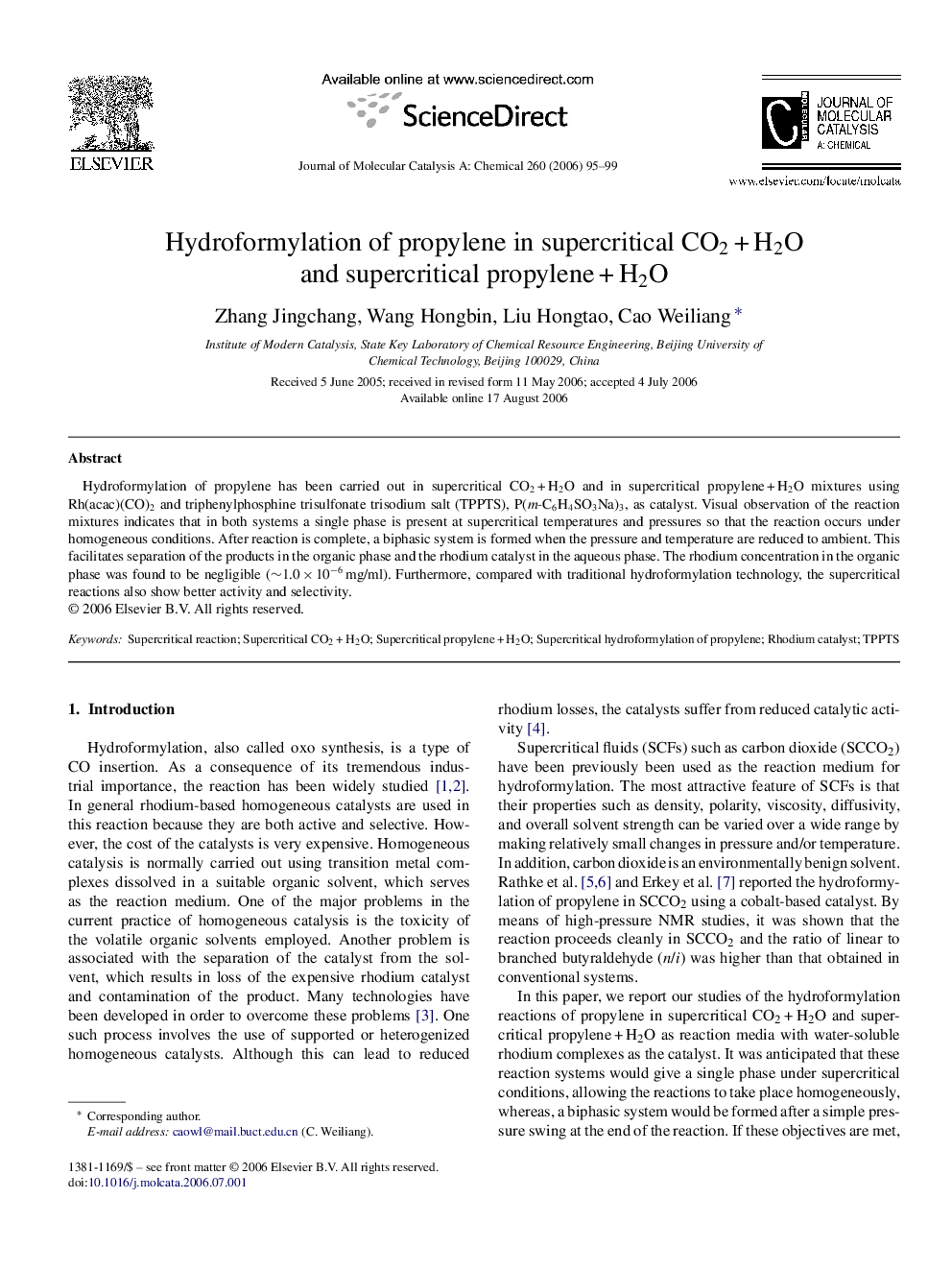| Article ID | Journal | Published Year | Pages | File Type |
|---|---|---|---|---|
| 68333 | Journal of Molecular Catalysis A: Chemical | 2006 | 5 Pages |
Hydroformylation of propylene has been carried out in supercritical CO2 + H2O and in supercritical propylene + H2O mixtures using Rh(acac)(CO)2 and triphenylphosphine trisulfonate trisodium salt (TPPTS), P(m-C6H4SO3Na)3, as catalyst. Visual observation of the reaction mixtures indicates that in both systems a single phase is present at supercritical temperatures and pressures so that the reaction occurs under homogeneous conditions. After reaction is complete, a biphasic system is formed when the pressure and temperature are reduced to ambient. This facilitates separation of the products in the organic phase and the rhodium catalyst in the aqueous phase. The rhodium concentration in the organic phase was found to be negligible (∼1.0 × 10−6 mg/ml). Furthermore, compared with traditional hydroformylation technology, the supercritical reactions also show better activity and selectivity.
Graphical abstractFigure optionsDownload full-size imageDownload as PowerPoint slide
